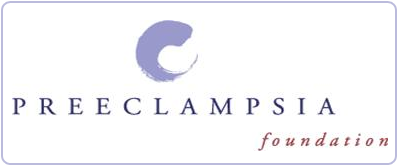Preeclampsia
The Dangers of High Blood Pressure and Pregnancy: When the pressure of the blood inside your arteries is at a higher level than normal during pregnancy, it could be a sign of serious complications, such as hypertension, preeclampsia and other related disorders.
What is Preeclampsia?
Preeclampsia is one of the most common complications of pregnancy, occurring in five to eight percent of pregnancies. It is as common in the USA as breast cancer, complicating over 200,000 pregnancies in this country alone. It is characterized by high blood pressure and protein in the urine, but other signs can occur as well. Most cases are very mild and occur near term with healthy outcomes. It can, however, be very dangerous for mother and baby, progressing quite rapidly in some instances. Early diagnosis and proper management by a qualified health care provider is crucial to keeping you and your baby safe.
What are the Symptoms or Signs of Preeclampsia?
Always trust your instincts if something feels wrong and report any of the following symptoms to your health care provider as soon as possible:
- Swelling in the hands, feet or face.
- Headaches that won't go away, even with medication.
- Changes in vision, double vision, blurriness, flashing lights or auras.
- Nausea or upper abdominal pain (often mistaken for "indigestion", "gallbladder pain", or the "flu."
Nausea late in pregnancy is not normal.) - Sudden weight gain of 2 pounds or more in one week.
In addition,
- High Blood pressure
- Protein in your urine
Those warning signs are more difficult to recognize without proper instruments such as a blood pressure cuff or dipsticks to measure the protein in your urine. If you are unsure, seek out free blood pressure screening devices at your local pharmacy. Although they are often inaccurate, they will give you some idea if you have high blood pressure.
Who Gets Preeclampsia?
As many as one in every twelve pregnant women develop preeclampsia, including many who have no known risk factors. Some risk factors have been identified by medical professionals as increasing your chance of developing preeclampsia.
Family history of:
- Preeclampsia on mother's OR father's side of the family
- High blood pressure or heart disease
- Diabetes
When Does Preeclampsia Begin?
Usually preeclampsia begins after 20 weeks, during the 2nd or 3rd trimester. For most women, preeclampsia begins to go away as soon as the baby is delivered. Nonetheless, serious complications can occur up to six weeks postpartum and women and their doctors need to be vigilant should signs of preeclampsia occur after delivery. If your blood pressure has not returned to normal after six weeks, you may be referred to a specialist for chronic hypertension.
What is the Treatment?
The only "cure" for preeclampsia is delivery of the baby. It may still be possible to have a vaginal delivery, but in some situations a cesarean birth might be necessary. Most babies do best if delivery can wait until at least 37 weeks. Bed rest, medication and even hospitalization may prolong your pregnancy. Often, women with preeclampsia will stay in the hospital because the symptoms may suddenly worsen and close monitoring is necessary.
What is HELLP Syndrome?
HELLP (Hemolysis, Elevated Liver enzymes and Low Platelets) syndrome is rare, but one of the most severe forms of preeclampsia. It can occur before you exhibit the classic signs of preeclampsia and is often mistaken for the flu or gallbladder pain. Early diagnosis is critical to aiding pregnant women with HELLP syndrome, as they may have uncontrollable bleeding, liver and blood pressure problems that can result in an adverse outcome for both the mother and the baby, including serious illness or death.
Are any Medications Used for Treatment?
If blood pressure is too high, there are medications that may be used to help bring it down. These medications rarely cause any side effects in the mother and if prescribed, it probably means your blood pressure is high enough to be a greater risk to you or your baby than the medications. One of the rare but possible risks of preeclampsia is seizure. Magnesium sulfate, given in an IV, is recommended for women with preeclampsia during labor or after delivery to prevent seizures. It is safe for the baby, but may cause hot flashes, sweating, increased thirst, vision change, sleepiness, mild confusion, muscle weakness, and shortness of breath in the mother. These side effects will all disappear when the medication stopped.
For More Information: Please visit www.preeclampsia.org. The Preeclampsia Foundation is a USA-based 501(c)(3) non profit organization dedicated to raising awareness, providing support and quality information, and funding research into the cause and cure for preeclampsia and related hypertensive disorders of pregnancy.

 PREGNANCY
PREGNANCY  GIVING BIRTH
GIVING BIRTH  BABY CARE
BABY CARE  HEALTH & SAFETY
HEALTH & SAFETY  FUN STUFF
FUN STUFF  FAMILY
FAMILY 